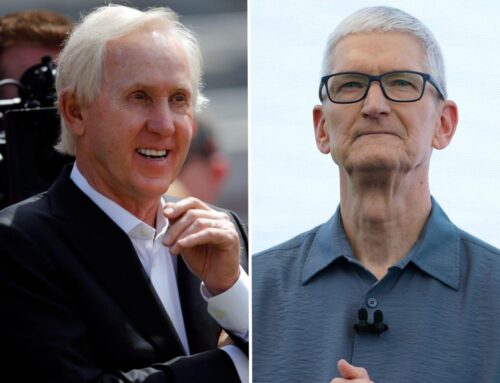Primary Voter Guide: The Mayoral Candidates’ Plans on Climate & Environment
June 12, 2025
Share This Article
As early voting kicks off on June 14 for New York City’s primary race, here’s a guide to the Democratic candidates’ stances on climate and environmental issues.

Two important topics—climate and the environment—were left out of the first mayoral democratic debate earlier this month. Housing, affordability and standing up to President Trump’s federal overreach in New York dominated the conversation instead.
While climate and environmental questions could still come up in the second debate this Thursday, advocates say these issues are failing to take precedence on a higher level.
“There’s been a shift in the United States away from climate action and I think there are a lot of complicated reasons for that. And the city’s politics reflect that too,” said Pete Sikora, climate and inequality campaigns director at New York Communities for Change.
But as climate change subjects New York City to increased temperatures, more extreme weather events and frequent flooding,some mayoral forums and environmental organizations are drawing attention to these pressing problems.
And two democratic candidates leading in the polls, former New York Gov. Andrew Cuomo and Assemblymember Zohran Mamdani, have stirred up particularly strong opinions among environmentalists.
They’re among 11 candidates vying for a chance to represent the Democratic party in the general election this fall by winning the upcoming primary, which will kick off with early voting on Saturday. Primary day is June 24.
On one hand, some grassroots environmental groups, like New York Communities for Change, say Mamdani is the person for the job. They say he has a great track record, fighting tooth and nail to ensure New York transitions away from the polluting fuels that drive climate change and invests in clean energy instead.
In 2021 he organized volunteers and lobbied Gov. Kathy Hochul to stop a plan to turn a “peaker” power plant in Astoria—used only during times of peak demand for gas—into a full service facility. He also backed the fight that put congestion pricing in place and the All-Electric Buildings Act, which prohibits the use of fossil fuel equipment, like gas stoves, in new construction statewide.
Meanwhile, environmental group Food & Water Action, the electoral arm of the national organization Food & Water Watch, says anyone but Cuomo will do. (The former governor resigned from that position in 2021 following a series of sexual harassment allegations, which he denies).
“Cuomo is a climate disaster and we’d be in much better shape for our public health, for our climate, for the good of New York City, with any other candidate,” said Laura Shindell, New York State director at Food & Water Action.
Cuomo got heat for reportedly receiving nearly $113,000 from the fossil fuel industry in the lead up to his reelection for governor in 2018, even as he vowed to phase out the use of planet-warming fuels. And in 2014, he tried to take out a $511 million low-interest loan from the state’s clean water fund to cover part of the costs of repairing a highway.
And in 2021, Cuomo tried to include a provision in the state budget that environmental groups say would have allowed building owners to evade carbon emission limits set by the city’s landmark climate act, Local Law 97 (LL97). They also point out that his current campaign for mayor is receiving funds from big real estate groups that oppose LL97.
Still, Cuomo did get the stamp of approval from the New York League of Conservation Voters (NYLCV), an influential environmental organization that monitors environmental issues in electoral platforms.
The group points out that it was under Cuomo’s governorship that New York passed legislation on congestion pricing, now in effect to reduce traffic and carbon emissions by charging drivers a fee to enter much of Manhattan. It was also under his governorship that state budgets included record funding for the Environmental Protect Fund, which pays for capital projects that protect the environment.
He banned fracking while in office. And the Climate Leadership and Community Protection Act (CLCPA), New York’s nation-leading road map to reduce the state’s greenhouse gas emissions, was also signed into law under Cuomo’s watch.
And while his critics say the former governor worked behind the scenes to weaken landmark climate legislation like the CLCPA during his time as governor, NYLCV’s Executive Director Julie Teague disagrees.

“The governor helped lead on getting the CLCPA passed,” Teague told City Limits. “At the end of the day we need someone who delivers.”
The environmental community may have to agree to disagree on the right candidate, but they all recognize there’s a lot at stake in this election.
Key policy issues that the new mayor will have to address include decarbonizing buildings and cars, investing in New York City’s parks, and expanding resiliency measures to protect the city’s most vulnerable from the threats of climate change. And they’ll be pressured to divest from fossil fuel use and ensure local authorities follow through with enacting and funding key environmental laws like LL97.
City Limits reached out to the candidates, reviewed their campaign websites and statements in mayoral forums to see what they’ve said about environmental issues.
Only four candidates—Mamdani, Comptroller Brad Lander, Sen. Zellnor Myrie, and former Comptroller Scott Stringer—have published concrete policy plans focused on the environment on their campaign sites.
Lander, for one, released a detailed roadmap that calls for installing more rooftop solar, fully funding the city’s Parks Department, and expanding financial assistance so more building owners can afford the energy retrofits required under LL97.
Then there is Stringer’s community-oriented approach. It encourages city agencies to buy produce from locally sourced farms and create “resilience hubs” in 10 neighborhoods with cooling and asthma assistance, support during climate emergencies and more.
Another notable plan comes from Myrie, who pledges significant investments to safeguard Black and Latino communities from the disproportionate impacts of climate change.
Check out the full rundown of the Democratic candidates’ climate platforms below.
Andrew Cuomo: Cuomo’s platform does not include extensive policies related to the environment or tackling climate change. But his campaign website does mention supporting environmental health “in the face of a federal government that is failing to address these challenges.”
And he mentions wanting to boost participation in the city’s curbside composting program through “public awareness campaigns, incentives and resources for landlords.”
Zohran Mamdani: The assemblymember said in an email that he vows to “lead a massive decarbonization and climate resiliency process citywide.”
Those efforts include building out renewable energy on public lands and overseeing a disaster preparedness program that “prioritizes safe and resilient housing and public waterfronts.” He also has big plans to renovate 500 public schools with renewable energy infrastructure to reduce building emissions, and turn 50 schools into resilience hubs that provide resources to residents during emergencies and weather disasters.
He would extend J-51 tax breaks, which give landlords an incentive to fix apartments, so property owners are in line with Local Law 97. And he says he will funnel more investments into NYC Accelerator, a government backed hub that provides one-on-one support for homeowners looking to comply with the climate law.

Brad Lander: The city comptroller’s detailed climate plans include using public financing to make 600 megawatts of solar energy accessible and affordable to over 150,000 households.
Lander also promises to electrify school buses, install 5 million square feet of solar or green roofs on schools and scale up green jobs, calling for 13,000 additional new positions in public solar installations alone.
The comptroller says he would fully fund the Parks Department’s day-to-day maintenance needs and reduce its repair backlog by 50 percent.
He also plans to accelerate LL97 compliance by helping 350,000 households afford energy-efficient equipment by expanding tax incentives, creating low-cost clean energy loans and cutting red tape for home retrofit projects.
Zellnor Myrie: A campaign spokesperson for Myrie says the senator plans to make “significant investments in climate resilience and infrastructure particularly in Black and Latino communities that are disproportionately impacted by climate change.” That includes upgrading sewers and introducing measures to control flooding in vulnerable communities.
Myrie will also work to ensure New York’s public schools switch to clean electric energy, and will invest in green union jobs for New Yorkers.
When it comes to Local Law 97, Myrie’s team said in an email that he will ensure the law isn’t undermined and is open to revising the legislation to keep property owners from choosing to pay fines, rather than invest in energy efficiency.

Limits’ mayoral forum in April. (Photo by Adi Talwar)
Scott Stringer: Former City Comptroller Stinger has a community-oriented approach to fighting climate change.
He wants to launch 10 “Neighborhood Resilience Hubs” that would provide cooling during heat waves, asthma support, supplies and other resources in climate emergencies. And he vows to fund a pilot program for community-run environmental projects like rooftop farms in five neighborhoods within the first six months in office.
Stringer pledges to create a pipeline for city environmental jobs, training local youth and underemployed adults to do work in mold removal, tree planting, solar installations, and composting.
He also promises to establish a Department of Food and Climate Resilience, which would ensure city agencies source food from New York farms and buy from local vendors.
Adrienne Adams: While the New York City Council Speaker doesn’t include details of an environmental platform on her campaign website, she does highlight how she led the passage of legislation that requires the city transition to zero-emission municipal vehicles.
And she’s backed other important climate measures, like the Climate Mobilization Act, a legislative package that aims to reduce the city’s greenhouse gas emissions from buildings and includes Local Law 97.
Michael Blake: While climate is not highlighted as a top issue in Blake’s platform, he does mention on this campaign website that he’s committed to “providing incentives for community gardens, urban farming and advancing environmental justice.”
And as a New York State Assemblyman, he co-sponsored a bill to tax major carbon emitters for climate pollution.

forum in April. (Photo by Adi Talwar)
Jessica Ramos: While she did not release a specific plan to tackle climate or environmental issues, the Queens State Senator vows to prioritize clean energy and sustainable infrastructure on her campaign website. It notes that Ramos, who fought against the building out of a polluting power plant in Queens, will tackle environmental racism and “create green jobs that put people and the planet first.”
Whitney Tilson: The former hedge fund manager does not mention climate on his campaign website, but said in a Q&A that Local Law 97 should be “suspended and fixed.”
“The intent was to focus on commercial buildings, but instead it will impose large new costs on coops and condos, mostly occupied by working-class New Yorkers. At a time when our city faces an historic housing crisis, this is unacceptable,” the candidate said.
Paperboy Love Prince: On his campaign website, Prince promises to invest in renewable energy and nuclear power, generate green jobs and stop subsidizing fossil fuels. There are also mentions of insulating and retrofitting homes so they become more energy efficient.
Dr. Selma Bartholomew: A mathematician and educator, Dr. Bartholomew hopes to establish a “Stewardship Block by Block” communication campaign that will, among other things, help get the word out about climate action on the local level.
She said she is also committed to upholding compliance with LL97 and to make clean energy and building upgrades affordable and accessible to all New York City residents.
And she noted in an email that she plans to establish what she calls “Business Eco Hubs.” These community-based centers will help locals, especially Black and brown residents fund and launch new businesses “focused on everything from green infrastructure to sustainable energy and disaster preparedness.”
To reach the reporter behind this story, contact [email protected]. To reach the editor, contact [email protected]
Want to republish this story? Find City Limits’ reprint policy here.
Search
RECENT PRESS RELEASES
Related Post




